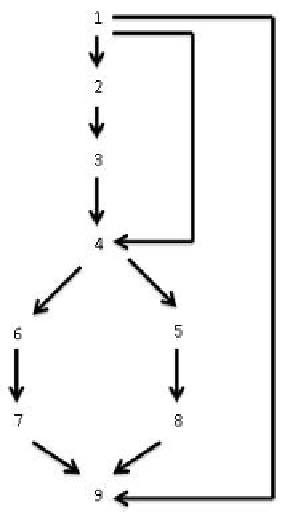Information Technology Reference
In-Depth Information
An explanation is a kind of logical relation between the
explanans
and the
ex-
planandum
[2]. In
why
-questions, the assertive part of the query can be chosen as
the
explanadum
and, as a capital part of the
explanans
, we can select the prior cause,
from which all the explicative process is triggered. In most cases, nevertheless, to
invoke only to the primary cause is quite limited. Other information should join
the prior cause in the explanation. A reasonable candidate will be the information
included in the relevant nodes of the graph. Our hypothesis is that nodes with high
centrality values would be relevant nodes. Depending on whether the answer is for
a people with expertise in medicine (in the example at hand) or without it, we can
select one or more central nodes to conduct the causal relation between the prior
cause and the final effect (the assertive part of the question).
In order to advance in this task, we conceive a mechanism represented by a graph
and we follow the widely shared conjecture that the higher the centrality of a node
in the graph, the greater its relevance [4]. Next, here is some notation concerning
centrality measures in a graph.
A graph
G
=(
V
,
E
)
consists of a finite set
V
of
vertices and a finite set
E
V
of edges. And edge connects two vertices
u
and
v
. The vertices
u
and
v
are said to be incident with the edge
e
and adjacent
to each other. Centrality is a function
C
which maps every vertex
v
(of a given
graph
G
)toavalue
C
⊆
V
×
(
v
)
∈
ℜ
.Avertex
u
is more important than another vertex
v
iff
C
. Vertices have different relevance. Centrality measures provide a
calculus to perform it. In the sequel, we will exemplify some centrality measures
for the example depicted in figure 17.6:
(
u
)
>
C
(
v
)



